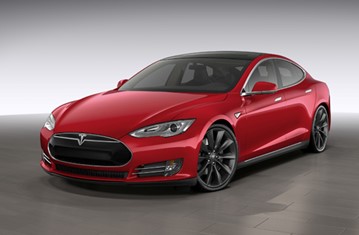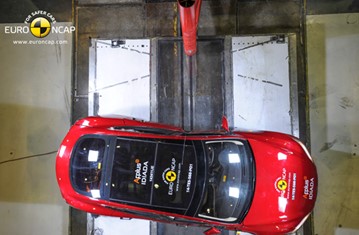Find more information in the General Comments section of the assessment
Find more information in the Rating Validity tab of the assessment
- See More
- See More
- See More
- See More
- Good
- Adequate
- Marginal
- Weak
- Poor
 Passenger
Passenger
 Driver
Driver
 Rear Seat
Rear Seat
 Front Seat
Front Seat
 Car
Car
 Pole
Pole
- Good
- Adequate
- Marginal
- Weak
- Poor


Passenger
outboard
center
Fitted to the vehicle as standard
Not fitted to the test vehicle but available as option
Not Available
-
Infants up to 13 kg
-
Infants and toddlers up to 18 kg
-
Toddlers from 9 to 18 kg
-
Toddlers over 18 kg
Easy
Difficult
Safety critical
Not allowed
| Seat Position | ||||
|---|---|---|---|---|
| Front | 2nd row | |||
| Passenger | Left | center | Right | |
| Maxi Cosi Cabriofix (Belt) | ||||
| Britax Römer King Plus (Belt) | ||||
| Britax Römer Duo Plus (ISOFIX) | ||||
| Britax Römer KidFix (Belt) | ||||
| Maxi Cosi Cabriofix & EasyFix (Belt) | ||||
| Maxi Cosi Cabriofix & EasyFix (ISOFIX) | ||||
| BeSafe iZi Kid X3 ISOfix (ISOFIX) | ||||
| Maxi Cosi Pearl & Familyfix (ISOFIX) | ||||
| Britax Römer KidFix (ISOFIX) | ||||
Easy
Difficult
Safety critical
Not allowed
The Model S scored maximum points for its protection of the child dummies in the dynamic tests. Both dummies were seated in rearward-facing restraints and showed good protection in the frontal impact. In the side impact, both dummies were properly contained within the protective shells of their restraints, minimising the risk of head contact with parts of the vehicle interior. The front passenger airbag can be disabled through the user menu, allowing a rearward-facing restraint to be used in that seating position. However, the interface is not clear in all languages about the actions being taken to set the airbag status and the system was not rewarded. All of the restraints for which the car is designed could be properly installed and accommodated with the exception of the Group I universal restraint in the rear outboard seats. While the seat could be installed, the seat cushioning made engagement of the ISOFIX probes difficult. Integral child restraints are available as an optional third row in the Model S.
- Good
- Adequate
- Marginal
- Weak
- Poor

Head Impact 13.9 Pts
Pelvis Impact 4.1 Pts
Leg Impact 5.8 Pts
The Tesla is equipped with an 'active' bonnet. When the system detects that a pedestrian has been struck, actuators lift the bonnet to provide greater clearance to hard structures underneath. Tesla showed that the system detects all statures robustly over a range of speeds and the car was tested with the bonnet in the deployed position. Protection was adequate or marginal over most of the surface of the bonnet with poor results recorded only at the base of the windscreen and on the stiff screen pillars. The bumper offered predominantly good protection to pedestrians' legs while the front edge of the bonnet gave good results towards the centre of the car but poor results at the outside edges.
- Good
- Adequate
- Marginal
- Weak
- Poor
| Speed Limit Information Function | Camera & Map |
| Speed Limitation Function | Manually Set |
| System Name | ESC | |
| Performance | ||
| Applies To | All seats | ||
| Warning | Driver Seat | Front Passenger(s) | Rear Passenger(s) |
| Visual | |||
| Audible | |||
|
|||
Electronic stability control is standard equipment on the Model S. A seatbelt reminder is standard for the front and rear seats, as is a lane departure warning system that met Euro NCAP's requirements. The Model S has a speed assistance system that can recognise the local speed limit and issue a warning to the driver when that limit is exceeded. The Model S is not equipped with an autonomous emergency braking system.
- Specifications
- Safety Equipment
- Videos
- Rating Validity
Specifications
Tested Model Model S 85kWh electric drivetrain, LHD
Body Type - 4 door saloon
Year Of Publication 2014
Kerb Weight 2100kg
VIN From Which Rating Applies - 5YJSA7H1XEFPXXXXX
Class Executive Car
Safety Equipment
Note: Other equipment may be available on the vehicle but was not considered in the test year.
Fitted to the vehicle as standard
Fitted to the vehicle as option
Not fitted to the test vehicle but available as option
Not Available
Not Applicable
Videos
Rating Validity


Find more information in the General Comments section of the assessment
 Share
Share










The passenger compartment remained stable in the frontal impact. Readings from the passenger dummy indicated good protection of all body areas except the head. Analysis of the dummy kinematics showed that the airbag on the passenger side had 'bottomed out' i.e. there was insufficient inflation to prevent the head flattening the airbag and coming into contact with the facia, through the airbag material. Tesla investigated the issue and found an error in the airbag calibration software supplied by the vendor. Euro NCAP has been informed that this error has been corrected in all vehicles supplied to customers. Although the calculated injury parameters were not hazardous, protection of the passenger head was penalised and rated as adequate. Dummy readings indicated good protection of the knees and femurs of the driver and passenger. Tesla showed that a similar level of protection would be provided to occupants of different sizes and to those sat in different seating positions. In the side barrier test, the Model S scored maximum points with good protection of all body regions. In the more severe side pole test, dummy measurements of rib compressions indicated weak protection of the chest. Protection against whiplash injury in the event of a rear-end collision was rated as good for the front and rear seats.